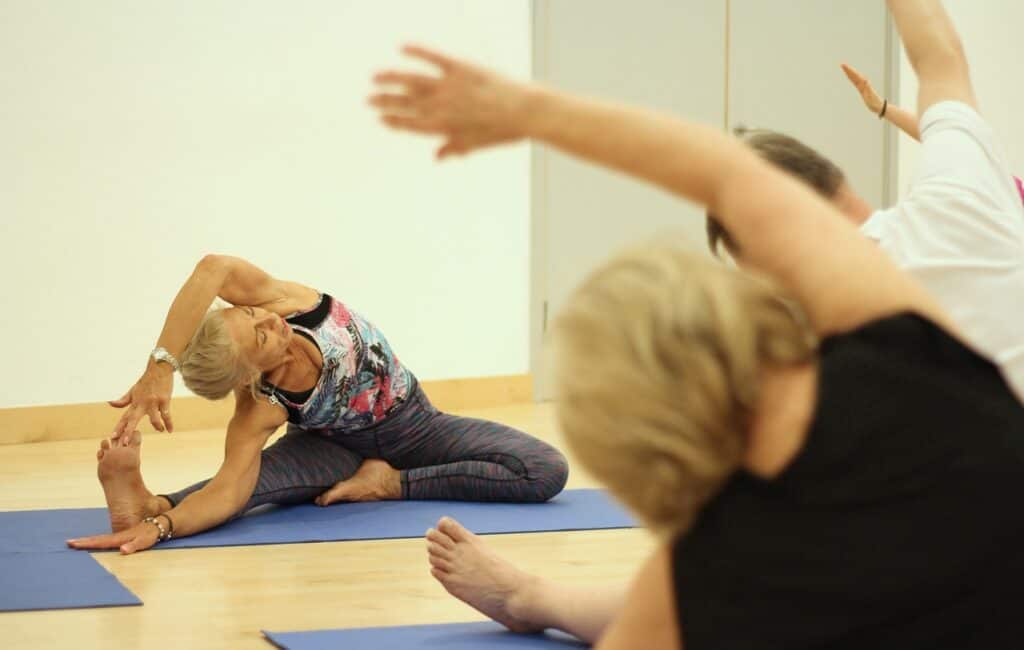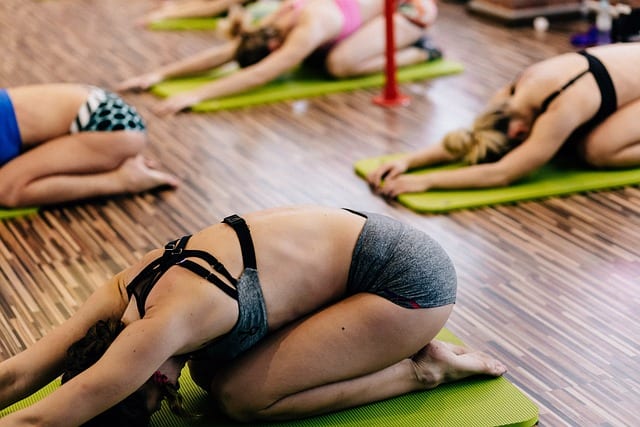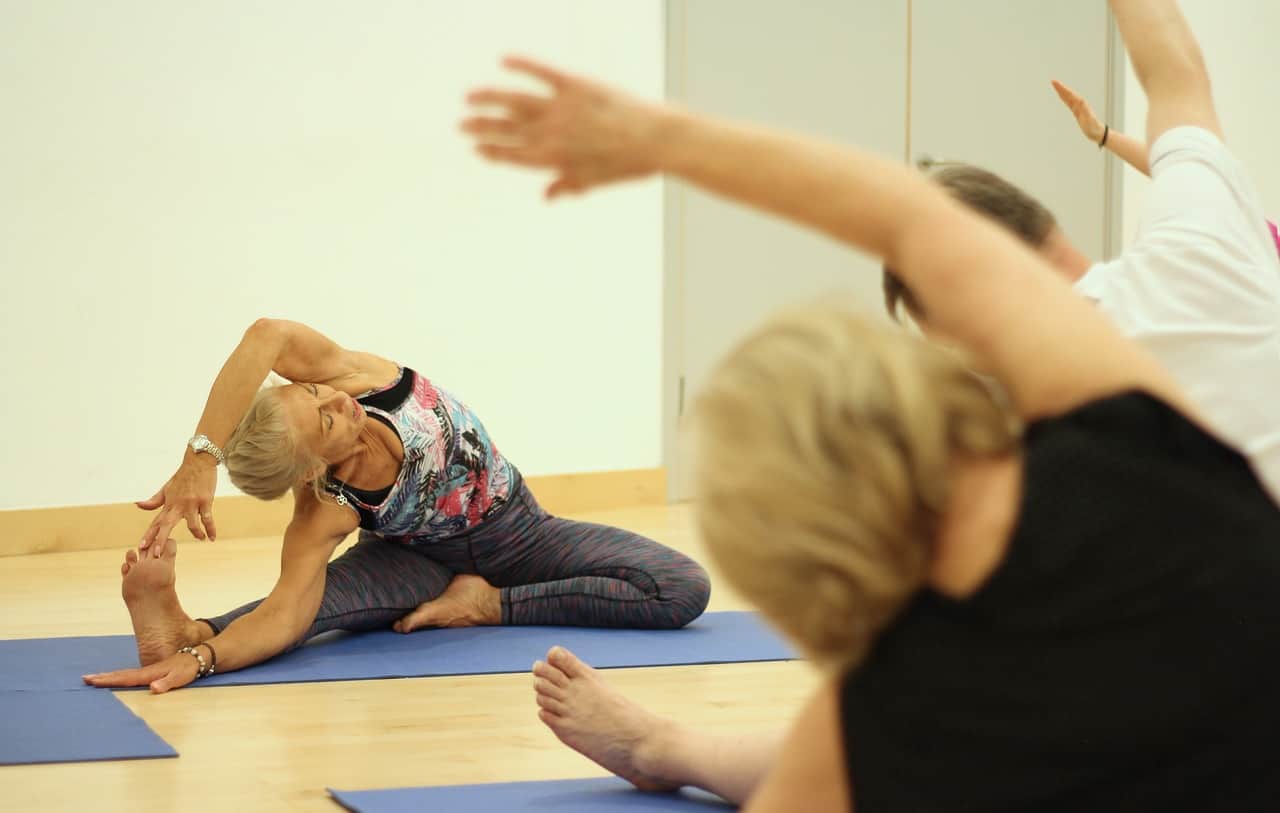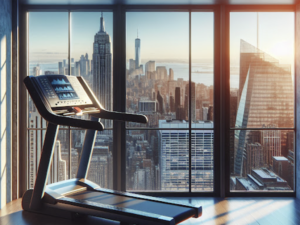5 Ways to Become More Flexible

Flexibility is vital for everyone. However, some people who want to become more flexible say, “I am not a flexible person.” In this article, flexibility is used synonymously with the term mobility. This way, everyone can benefit from the included activities and become a more flexible or mobile person. Here is why and how to get started.
Become More Flexible vs Stable
The human body has 206 bones connected at joints. Each joint has a specific purpose. Some human joints function as “stable” joints, providing support to the body when performing various activities. The other role of human joints is to be mobile or flexible. Flexibility allows the body the appropriate amount of movement to get in certain positions at work or home.
But which joints are known as flexible and which are stable? The body has the following alternating pattern of stability to mobility:
- Neck is stable
- Thoracic spine is mobile
- Lumbar spine is stable
- Hips are mobile
- Knees are stable
- Ankles are mobile
In addition to the list above the shoulders are mobile, elbows are stable, and the wrists are mobile.
Does this mean that a ‘stable’ joint should not be able to move? Not at all. This is just the primary function of the joint when doing daily activities.
5 Ways to Become More Flexible
1. Child’s Pose

The Child’s Pose is a relaxing yoga pose that improves the flexibility and mobility in the back, shoulders, and especially the hips while promoting a sense of calm and relaxation. This pose helps ensure enough hip and shoulder mobility to perform a squat. Here are the steps to performing a proper Child’s Pose:
- Start by kneeling on the floor with your big toes touching and knees hip-width apart.
- Sit back on your heels and take a deep breath in.
- Exhale as you fold forward from your hips, extending your arms in front of you.
- Rest your forehead on the mat or as close to the floor as you can comfortably reach.
- Keep your arms extended, palms facing down, and your fingers spread.
- Relax your shoulders and let them drop towards the ground.
- Take slow, deep breaths, feeling your spine lengthen and your hips sink towards your heels.
- Hold the pose for 30 seconds to a few minutes, breathing deeply and relaxing into it.
- To release, gently walk your hands back towards your body, returning to a kneeling position.
The Child’s Pose is an excellent posture for relieving stress and is often used as a resting pose during yoga practice.
2. Bretzel Stretch

The Bretzel Stretch is a dynamic stretching exercise that targets the hips, glutes, and lower back. Here’s how to perform the Bretzel Stretch to improve your flexibility and mobility:
- Start by lying on your back with your legs extended.
- Bend your right knee and bring it toward your chest.
- Cross your right leg over your left leg, placing your right foot on the ground on the left side of your left leg.
- Extend your right arm out to the side at shoulder height, palm facing down.
- Gently rotate your hips and lower back to the left, allowing your right knee to move toward the floor.
- Keep your right shoulder on the ground as you twist, and try to keep your right knee as close to the floor as possible.
- Hold this position for 20-30 seconds, feeling a stretch in your hips and lower back.
- Return to the starting position, then switch to the other side, bending your left knee and crossing it over your right leg.
- Repeat the stretch on the left side, holding for 20-30 seconds.
- Perform the Bretzel Stretch on each side 2-3 times to improve hip and lower back flexibility.
The Bretzel Stretch is an excellent exercise to incorporate into your warm-up or cooldown routine to enhance hip mobility and alleviate lower back discomfort.
3. Bretzel 2.0

The Bretzel 2.0 Stretch is a variation of the Bretzel Stretch, which provides an even deeper stretch to improve your flexibility in your hips and lower back. Here’s how to perform the Bretzel 2.0 Stretch:
- Start by lying on your back with your legs extended.
- Bend your right knee and bring it toward your chest.
- Cross your right leg over your left leg, placing your right ankle just above your left knee.
- Gently rotate your hips and lower back to the left, allowing your right knee to move toward the floor.
- Extend your right arm out to the side at shoulder height, palm facing down.
- With your left hand, reach through the gap between your legs and clasp your hands behind your left thigh.
- Pull your left thigh gently toward your chest while keeping your right shoulder on the ground.
- Hold this position for 20-30 seconds, feeling a deep stretch in your hips and lower back.
- Return to the starting position, then switch to the other side, bending your left knee and crossing it over your right leg.
- Repeat the stretch on the left side, holding for 20-30 seconds.
- Perform the Bretzel 2.0 Stretch on each side 2-3 times to enhance hip and lower back flexibility and alleviate tension.
The Bretzel 2.0 Stretch is an advanced version of the original stretch, offering a more intense hip and lower back stretch. It’s great for improving flexibility and addressing tightness in the hip area allowing you to become more flexible.
4. Downward Dog

The Downward Dog pose is an excellent activity to perform in order to increase your mobility and flexibility throughout the chest, hips, hamstrings, and calves. Steps to perform the Downward Dog are as follows:
- Start on your hands and knees in a tabletop position, with your wrists aligned under your shoulders and your knees under your hips.
- Spread your fingers wide for stability and tuck your toes under.
- As you exhale, lift your hips toward the ceiling, straightening your arms and legs. Your body should form an inverted V shape.
- Press your heels toward the ground, but it’s okay if they don’t touch.
- Engage your core muscles to help lengthen your spine, and let your head hang between your arms, creating a straight line from your wrists to your hips.
- Relax your neck and keep your gaze between your knees or toward your navel.
- Breathe deeply and hold the pose for 30 seconds to 1 minute.
- To release, bend your knees and return to the tabletop position or transition into another yoga pose.
The Downward Dog pose is an excellent yoga pose that stretches and strengthens the entire body while improving flexibility and posture. It’s often used in yoga sequences as a transition or resting pose.
5. T-Spine Rotation

The T spine rotation exercise is an excellent way to improve your flexibility and mobility in your thoracic spine. The steps to perform the T-spine rotation with lumbar locked exercise are as follows:
- Start by getting into a quadruped position.
- Sit your buttocks on your heels with your elbows and forearms placed firmly in the floor.
- Next, put one hand on the base of your neck, palm facing towards the neck.
- Look toward the ceiling while rotating that engaged elbow toward the ceiling.
- Return to the starting position and proceed to take the elbow toward the floor while keeping the supporting arm firmly on the ground.
- To end, raise the elbow back to the starting position.
The T-spine rotation exercise helps address the stiffness and loss of flexibility experienced between your shoulder blades. This is very important because of how much we sit during the day.
FAQ:
- Do I have to do these every day?
- It is important to work on your flexibility daily in order to see your best gains.
- How long do I hold the poses?
- Research shows that 30 seconds is a good number to begin. 15 seconds is typically too short a timeframe.
- What if the exercise is too tough?
- Breathe; the main cause of a mobility activity being ‘tough’ is our inability to breathe in the position. Just back off a little and breathe in and out to relax into the position.
Conclusion:
As you can see, striving to be more flexible is just a matter of becoming more mobile. This article provides 5 good ideas one can use to improve overall mobility. This improvement plays a much bigger role.
Being able to get in various positions like a squat, lunge, or a lift can help prevent future injuries when living life.





Pingback: 5 Reasons to Improve Walking Distance - Rehab Memos
Pingback: How to Breathe Correctly in 5 Easy Steps - Rehab Memos